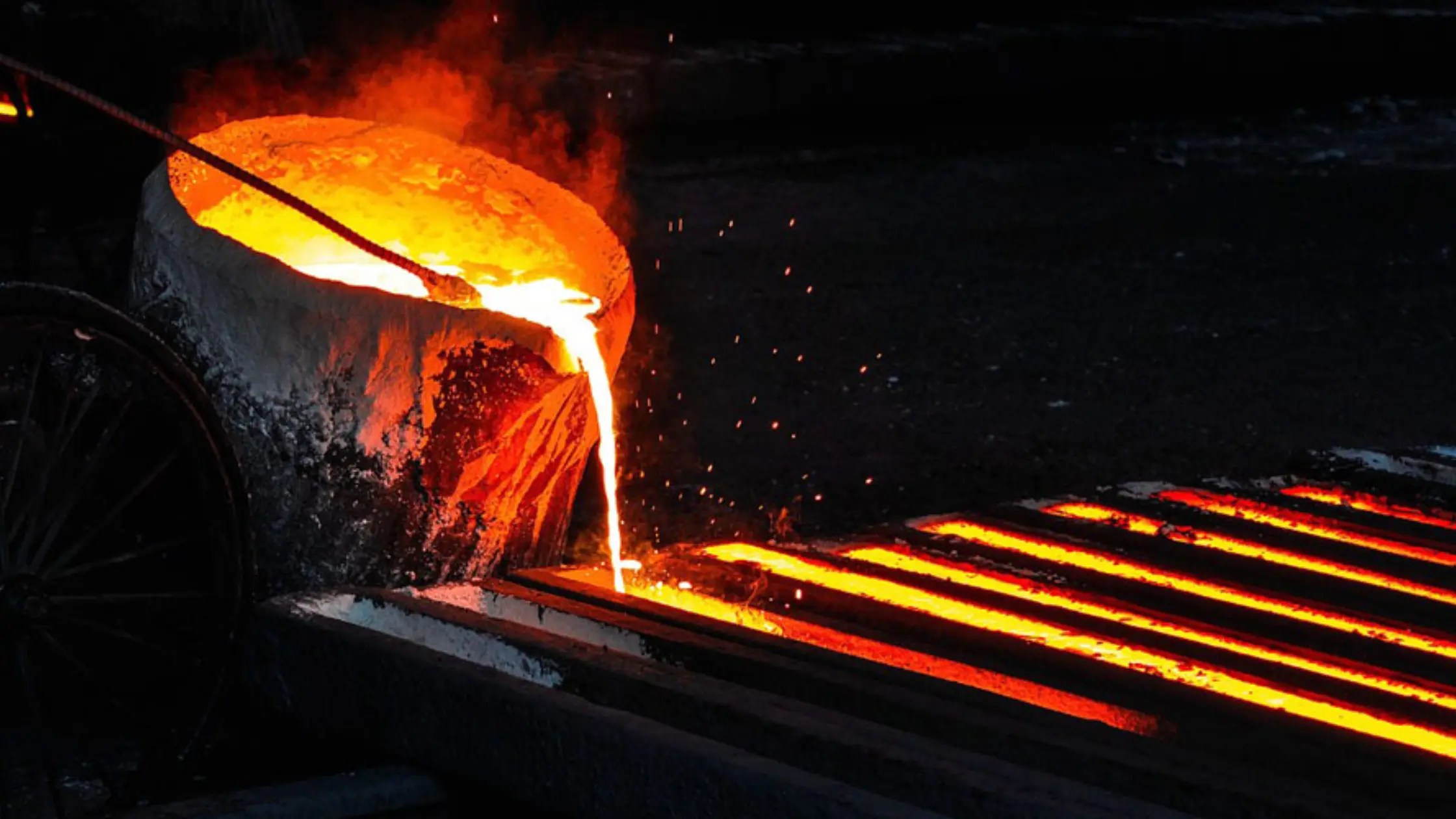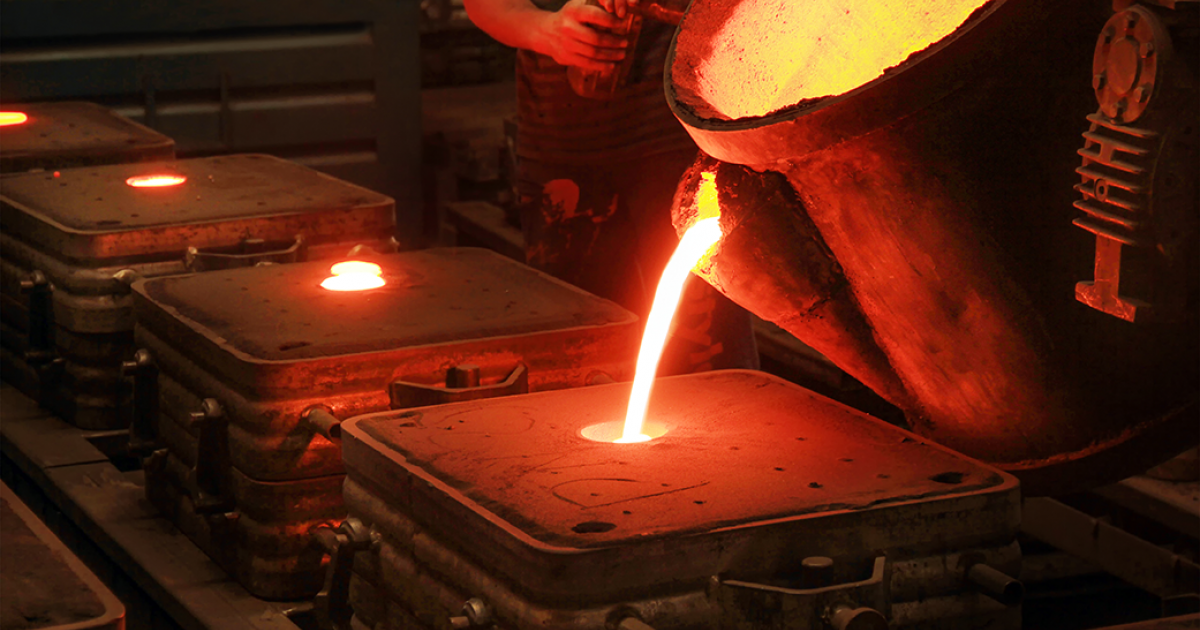Proven Strategies to Achieve High-Quality Aluminum Casting Results
Exploring the Art of Metal Casting: Methods and Applications in Modern Foundries
Metal casting is a time-honored craft that integrates creativity with engineering accuracy. From ancient methods to modern-day improvements, this procedure has actually progressed significantly. Numerous approaches, such as sand casting and lost-wax casting, display the convenience of the tool. Technologies like 3D printing are improving how shops run. As the lines between performance and creativity blur, one must consider just how these developments effect both contemporary applications and standard methods. What exists in advance in this advancing landscape?
The Principles of Metal Casting
Metal casting, a critical procedure in manufacturing, includes putting liquified metal right into a mold and mildew to accomplish a wanted shape. This strategy functions as a structure in the production of intricate metal components throughout numerous sectors. Crucial element of steel casting include the selection of products, which can range from light weight aluminum to steel, each selected for its details properties and application suitability. The process begins with mold creation, which can be made from sand, steel, or porcelains, relying on the casting method utilized. The molten metal is then meticulously put into the mold and mildew, where it solidifies and cools. Essential factors such as temperature control, cooling down price, and mold design greatly influence the end product's top quality and attributes. Additionally, recognizing the chemical and physical homes of the metal help in maximizing casting performance, eventually improving the performance of the production procedure and making certain high-quality result customized to particular demands.
Conventional Casting Methods
Traditional casting methods encompass a range of techniques that have stood the examination of time, demonstrating their performance in creating detailed metal components. One famous method is sand casting, which employs a blend of sand and a bonding agent to develop molds. The adaptability of sand casting allows for the manufacturing of varied shapes, making it appropriate for both small-scale and large manufacturing. One more notable technique is financial investment casting, frequently used for complicated and exact geometries. This technique entails developing a wax pattern that is covered in a ceramic shell, which is after that heated to get rid of the wax, leaving a dental caries for liquified steel. Furthermore, pass away casting is utilized for high-volume production, where molten steel is infused into reusable metal molds. Each of these typical techniques stays pertinent, showcasing the craftsmanship and skill intrinsic in the art of metal casting, while satisfying the needs of various markets.
Modern Innovations in Metal Casting
As industries progress, advancements in metal casting are reshaping manufacturing procedures and boosting performance. Advanced innovations such as 3D printing and computer-aided style (CAD) are reinventing mold creation, allowing for intricate styles that were formerly unattainable. These techniques assist in fast prototyping, fostering and reducing lead times creativity in item development.
In addition, the assimilation of automation and robotics in factories is improving operations, minimizing human error, and boosting safety and security. Smart sensing units and real-time surveillance systems allow exact control of temperature level and material properties, ensuring better end results.
Lasting practices are emerging, with the use of recycled products and energy-efficient furnaces, minimizing environmental effect. The adoption of sophisticated alloys and composite products is likewise increasing the possibilities of steel casting, resulting in stronger and lighter parts. On the whole, these modern developments are changing steel casting right into a more reliable, precise, and eco liable industry.
Applications Across Different Industries

While varied sectors increasingly count on metal casting, the method's flexibility plays an essential role in conference particular application demands. In the auto market, steel casting is essential for creating engine elements, transmission housings, and various other intricate parts that call for accuracy and resilience. The aerospace market advantages from light-weight casted parts, making sure both efficiency and gas performance. In addition, the construction market uses metal casting for structural aspects, such as light beams and supports, boosting the integrity of buildings and bridges.
Additionally, the energy field utilizes metal casting for turbine blades and various other significant equipment that must withstand severe conditions. Clinical gadgets likewise see applications of metal casting, especially in surgical tools and prosthetics, where accuracy is crucial - Metal Foundry. Overall, the flexibility and dependability of steel casting make it vital throughout different areas, adding to the development of modern technology and infrastructure in modern-day culture
The Artistic Side of Metal Casting
Although frequently connected with commercial applications, steel casting likewise discovers its place in the domain of art, where skilled artisans transform liquified steel right into meaningful sculptures and elaborate designs. This creative side of metal casting includes varied methods, including sand casting, lost-wax casting, and investment casting, each offering one-of-a-kind possibilities for imagination. Musicians utilize these techniques to create jobs that vary from abstract kinds to lifelike depictions, permitting individual expression and commentary on modern concerns.

Frequently Asked Inquiries
What Security Procedures Are Crucial in a Steel Casting Foundry?
Crucial precaution in a metal casting foundry consist of individual protective devices, appropriate ventilation, emergency situation methods, training in handling molten steels, routine tools maintenance, and clear interaction of threats to ensure worker safety and health. Metal Foundry.
How Do Environmental Rules Effect Metal Casting Processes?
Ecological laws greatly influence steel casting procedures by mandating using cleaner innovations, minimizing emissions, and advertising waste monitoring methods. Compliance typically calls for financial investments in tools, training, and alterations to existing treatments to minimize environmental impact.
What Are the Usual Flaws in Metal Castings?
Usual problems in metal castings include porosity, shrinking, additions, and misruns. These concerns can emerge from incorrect mold layout, poor temperature level control, or contamination, ultimately influencing the architectural stability and overall high quality of the end product.
Exactly How Is Waste Managed Throughout Metal Casting Manufacturing?
Waste monitoring in steel casting manufacturing involves recycling scrap metal, carrying out reliable material use, and making use of sophisticated innovations to lessen waste. Factories take on methods like sand reclamation and proper disposal techniques to reduce ecological impact.
What Career Opportunities Exist in the Metal Casting Industry?
The steel casting market supplies varied occupation opportunities, including functions such as foundry manager, metallurgical engineer, quality control assessor, pattern maker, and manufacturing supervisor, catering to numerous ability collections and knowledge in manufacturing processes.
Metal casting, a pivotal procedure in manufacturing, includes putting molten steel into a mold to accomplish a preferred form. In addition, pass away casting is used for high-volume manufacturing, where molten steel is infused right into multiple-use steel mold and mildews. While diverse markets progressively count on metal casting, the technique's adaptability plays a crucial role in conference certain application requirements. Frequently connected with commercial applications, metal casting likewise finds its place in the domain of art, where proficient craftsmens transform liquified metal into complex designs and expressive sculptures. Waste monitoring in metal casting manufacturing entails recycling scrap metal, implementing efficient material use, and making use of advanced modern technologies to reduce waste.